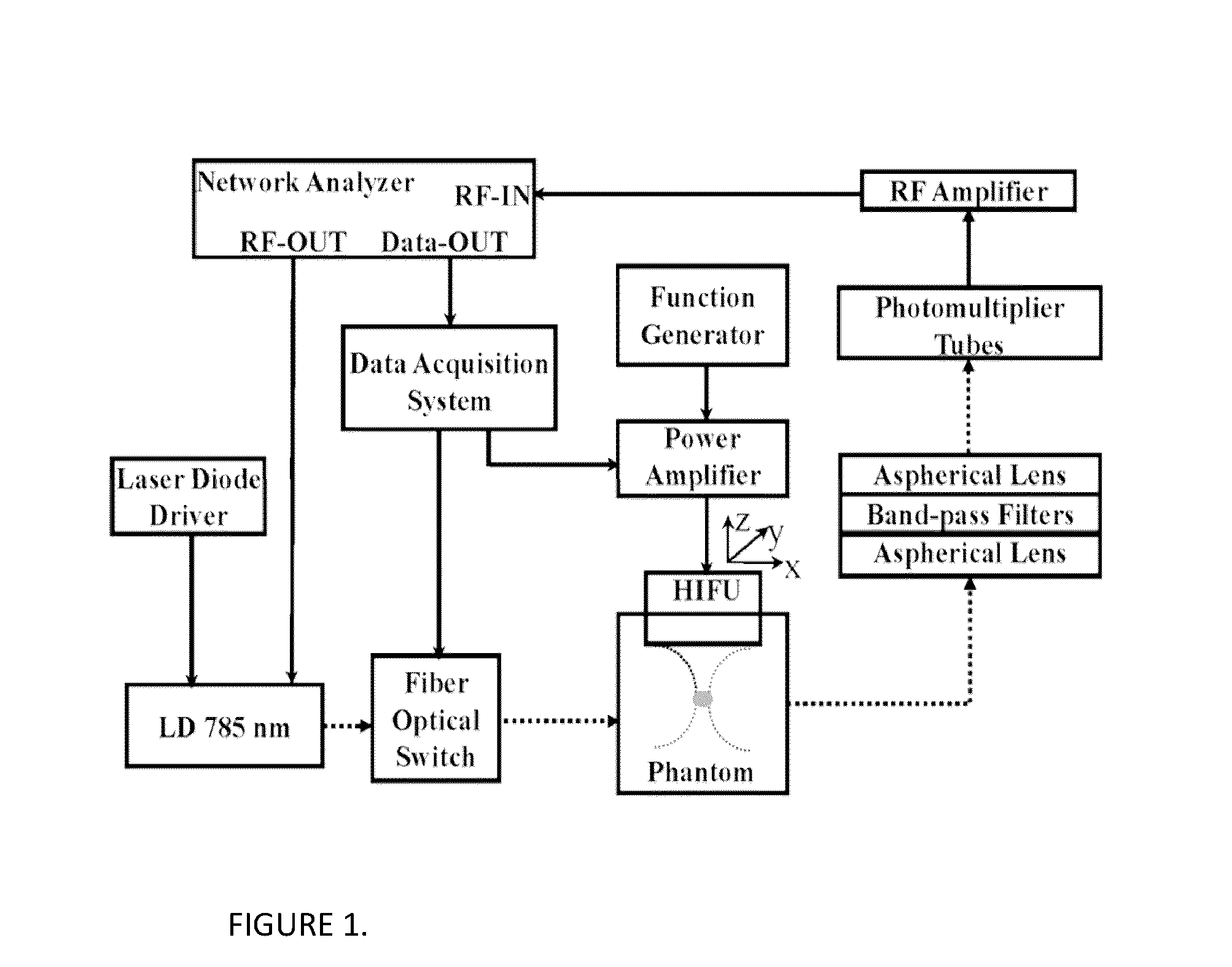Temperature-modulated fluorescence tomography
a reporter imaging and temperature-modulated technology, applied in the field of fluorescence-based reporter imaging, can solve the problems of high scattering in biological tissues, inability to achieve high resolution optical imaging of fluorescence in thick tissue, and large amount of scattering events of photons
- Summary
- Abstract
- Description
- Claims
- Application Information
AI Technical Summary
Benefits of technology
Problems solved by technology
Method used
Image
Examples
working examples
[0035]Experimental studies were carried out to demonstrate that the TM-FT could penetrate several centimeters thick scattering tissue, yet still at ultrasound resolution (sub-millimeter). The schematic diagram of the system is shown in FIG. 1. A 785 nm laser diode (80 mW, Thorlabs, Newton, N.J.) was used for fluorescence excitation. This laser wavelength was chosen due to high absorption of ICG, the fluorescence contrast agent used in this particular nanocapsule. Any wavelength can be used depending on the absorption spectrum of the particular fluorescent agent used in the nanocapsule. Near-infrared (NIR) wavelength range (600-1100 nm) would be especially suitable for in vivo imaging due to low absorption of tissue in this range. A network analyzer (Agilent Technologies, Palo Alto, Calif.) not only provided the RF modulation for the laser-diode but also measured the amplitude of the detected signal at the same time. A photomultiplier tube (PMT) (R7400U-20 Hamamatsu, Japan) was used ...
PUM
 Login to View More
Login to View More Abstract
Description
Claims
Application Information
 Login to View More
Login to View More - R&D
- Intellectual Property
- Life Sciences
- Materials
- Tech Scout
- Unparalleled Data Quality
- Higher Quality Content
- 60% Fewer Hallucinations
Browse by: Latest US Patents, China's latest patents, Technical Efficacy Thesaurus, Application Domain, Technology Topic, Popular Technical Reports.
© 2025 PatSnap. All rights reserved.Legal|Privacy policy|Modern Slavery Act Transparency Statement|Sitemap|About US| Contact US: help@patsnap.com



